Menu
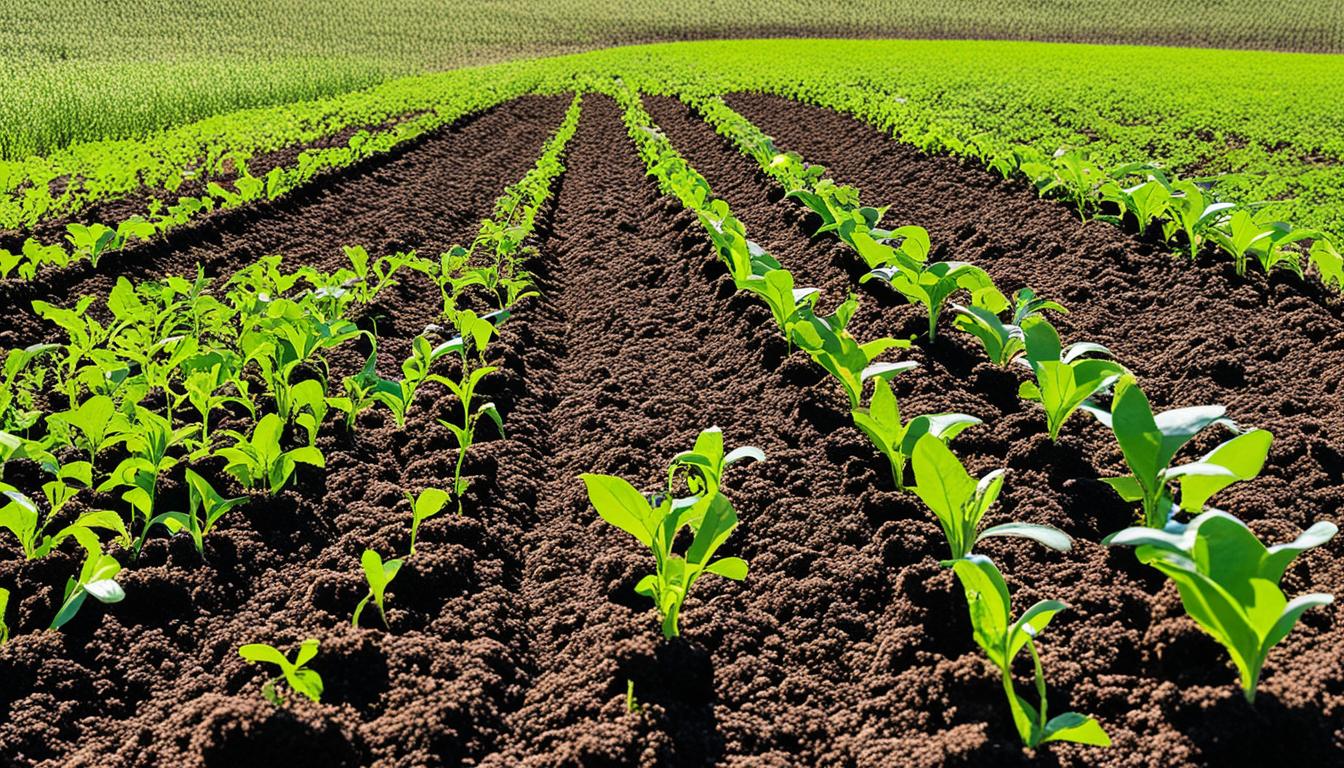
No-till farming is quickly becoming a popular choice worldwide. It helps fields produce more high-quality crops sustainably. This way of farming boosts levels of organic matter and improves the soil’s structure, important for keeping the soil healthy.
In places like Pennsylvania, no-till farming is key in regenerative agriculture. It brings many pluses, like stronger soil life and better crop growth without needing to plough.
Organic no-till farming is a new way to farm without digging up the soil much. It aims to keep the soil healthy and prevent it from washing away. This method helps in farming while taking care of the land.
This way of farming is part of a bigger goal called sustainable agriculture. It means farming in a way that uses less fuel and helps the planet. By using less machinery, we also make less pollution. This is better for the Earth.
Choosing the right kind of plants to cover the soil is key in this farming method. Plants like crimson clover and winter rye work well because we can roll over them easily. But not all plants can be managed the same way. Some need special care to stop their growth at the right time.
Picking the best time to stop these cover plants from growing too much is also very important. It works better in warm, dry weather. This way, the soil stays in place, more plants grow, and we spend less money and time on farming.
Organic no-till farming started getting popular in the 1980s. It changed farming by showing that we could just cut down some plants instead of ploughing the ground. The cut plants then cover the soil, stopping weeds from growing.
But this way of farming isn’t always easy. Sometimes, there are too many weeds or the crops don’t grow well. New tools and methods, like machines to plant without tilling, are helping to make it work better. Adding more plants and changing what we grow each year also helps the soil and cuts down on the hard parts of this kind of farming.
So, organic no-till farming is much more than not using a plough. It’s a whole system that helps the farm become its own healthy ecosystem. This approach makes the farm strong and better for the future.
No-till farming is great for soil. It works well with natural and regenerative ways of farming. This helps make our agriculture strong and sustainable.
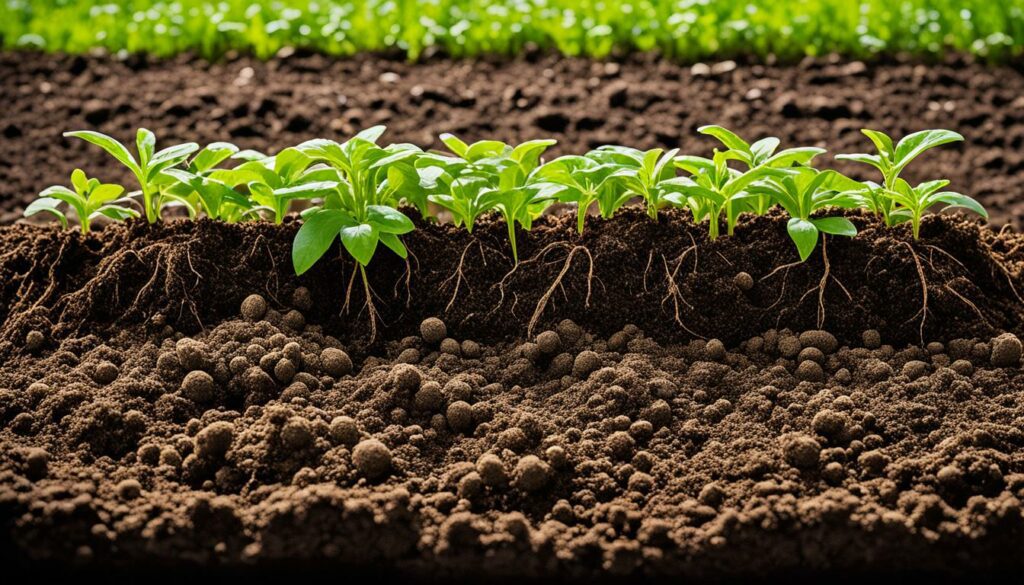
No-till farming makes soil better. It does this by not disturbing the soil much. This lowers compaction and increases aggregation. The result is better water going into the soil and more water staying in it. It keeps our crops healthy. Research has shown that with no-till, soil erosion can be cut by more than 80 percent. This helps keep the topsoil and its nutrients safe.
No-till farming increases the organic matter in the soil. This is because the soil isn’t tilled, breaking part or turning over. More organic matter means the soil is more fertile and strong. It can help crops grow better. According to the U.S. Department of Agriculture (USDA), using no-till keeps organic materials on the soil’s surface. Over time, this helps store more carbon in the soil and stop around 5.8 million tons of carbon-dioxide from drifting into the air each year in the U.S.
No-till farming creates a richer soil life below the surface. It does this by keeping the soil’s natural layout and adding more organic matter. This means there are more microbes and earthworms in the ground. They help move nutrients around and keep the soil healthy. Farmers using no-till also spend less on work and fuel, about 30-50 percent less. This saves money and resources while helping the environment.
No-till and regenerative farming cut a farm’s greenhouse gas emissions by up to 69 percent. This is good for the long run. Here’s a table showing how no-till farming makes a big difference:
| Impact | Statistics |
|---|---|
| Greenhouse Gas Emissions | 10% of U.S. emissions in 2019 from agriculture |
| No-Till Farming Adoption | Only one-fifth of farmland practices continuous no-till |
| Diesel Fuel Savings | 588 million gallons annually |
| Carbon-Dioxide Emissions Prevented | At least 5.8 million tons across the U.S. |
| Soil Erosion Reduction | More than 80 percent |
| Fuel Usage Reduction | 50 to 80 percent, saving money |
| Labour Reduction | 30 to 50 percent less than conventional tillage |
| Sediment Loss Reduction | 99 percent |
| Greenhouse Gas Emissions Reduction | 69 percent per USDA’s COMET-Farm Tool |
Adding cover crops to no-till farming is crucial for better soil health and successful regenerative farming. These crops do more than just stop soil erosion. They also make the soil richer and healthier.
Studies show that using both no-till and cover crops stops soil from washing away. This method can yield as much as, or more than, traditional farming. It helps the environment and saves money for farmers.
“Transitioning from conventional tillage to no-till can significantly increase soil carbon and other soil quality parameters, exemplified by research findings.”
Cover crops are vital. They boost soil life, keep nitrogen in the ground, and hold water. By using them, farmers can build strong, lasting soil. Plus, farmers need fewer chemicals, which is good for the planet.
To stop cover crops, machines can be used instead of chemicals. The roller-crimper is very good at this. It cuts down on work and saves energy. Studies show it works well, especially on crops like grains and legumes.
Cover crops can cause some problems, like taking too much nitrogen or making the soil too cold. The key is to choose the right ones. Good cover crops grow fast, can handle the cold, and give back to the soil. This keeps the soil and crops healthy.
| Cover Crop | Benefits |
|---|---|
| Crimson Clover | Improves nitrogen levels, supports soil health |
| Winter Rye | Prevents erosion, suppresses weeds |
| Spring Barley | Enhances soil structure, conserves moisture |
| Buckwheat | Increases organic matter, attracts pollinators |
| Millet | Improves soil texture, supports biodiversity |
In the end, using cover crops in no-till farming is a big move towards real sustainability. They help soil and the environment and support ongoing farming.
Organic no-till farming benefits greatly from good weed management. We use several weed suppression techniques to get high crop yields without heavy use of chemicals. These techniques include using cover crops and natural herbicides.
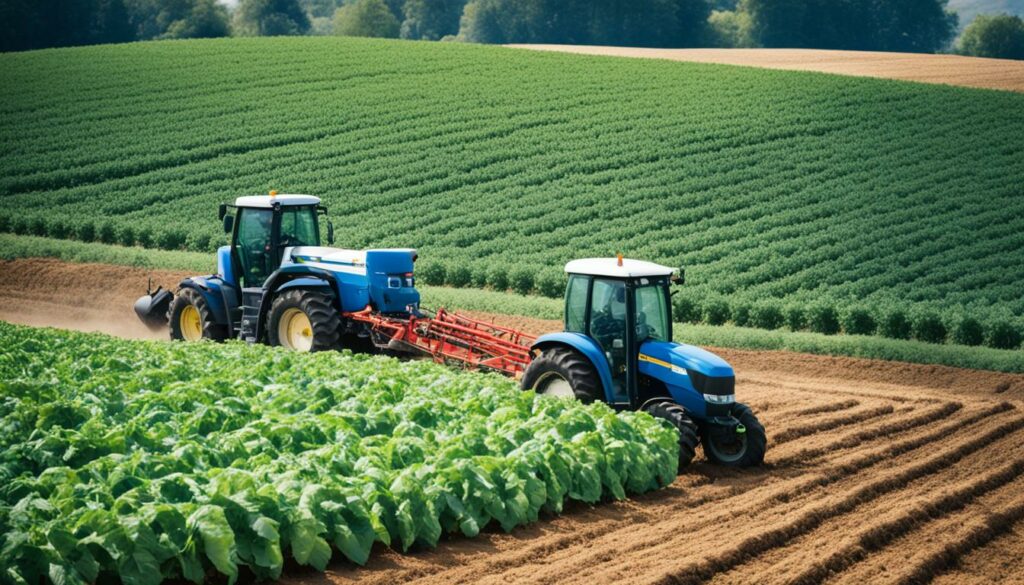
Cover crops are key in natural farming methods because they stop weeds naturally. They make a protective layer that helps the soil and stops weeds from growing. Cover crops like crimson clover and winter rye improve the soil and keep weeds down. Yet, it’s important to end them at the right time to avoid any re-growth.
Natural herbicides can also help in keeping weeds at bay in no-till farming. It’s best to use different kinds that work in various ways to control weeds well but not harm the soil. Mixing herbicides in the tank gives a more complete approach to weed management.
The success of herbicides is very linked to the weather, especially how much moisture there is. Farmers may need to apply herbicides a few times a year to manage weeds. While natural herbicides are key in natural farming methods, they have to be picked and used thoughtfully to protect the environment.
The combo of weed suppression techniques in no-till farming makes a strong system. It beats back weeds, keeps the soil healthy, and helps crops grow without chemicals as much.
Organic no-till farming plays a vital role in fighting climate change. It reduces greenhouse gas emissions significantly. In 2019, about 10% of the US’s emissions came from farming.
Only a fifth of farms in the US practise no-till. But, if more farms use this method, we can cut carbon emissions by a lot.
No-till methods help farmers save about 588 million gallons of diesel yearly. This reduces carbon dioxide emissions by at least 5.8 million tons a year. It’s like taking over 1 million cars off the road each year.
No-till farming isn’t just about cutting emissions. It also makes soil and water healthier. No-till cuts soil erosion by more than 80%. This keeps water in nearby areas clean.
It also means less fuel is used, saving money for farmers. No-till requires 30 to 50% less labour, which is another saving.
Take Macauley Farms in New York. They improved earnings by over $25,000 every year with no-till. They saved around $72 per acre in costs.
The USDA helps farmers who want to try no-till. Programs like CSP and EQIP offer support. No-till can cut more than 0.77 metric tons of carbon per acre each year. And cover crops reduce carbon by about 0.76 metric tons per acre yearly.
Overall, no-till is cheaper for saving carbon than cover crops. The cost for saving carbon with no-till is about $21.98 per ton. Cover crops are pricier at $59.68 per ton.
About 10% of no-till and cover crop areas may not improve soil carbon. These areas won’t get paid for carbon sequestration.
Certain markets allow farmers to sell carbon credits. Knowing about these markets helps farmers make money from saving the environment. This makes farmers key players in the fight against climate change.
Organic no-till farming has many upsides for the environment. But, it does bring some tough challenges. It’s important to handle leftover crop bits well and to keep an eye on pests and diseases. Overcoming these challenges is key to successful organic farming.
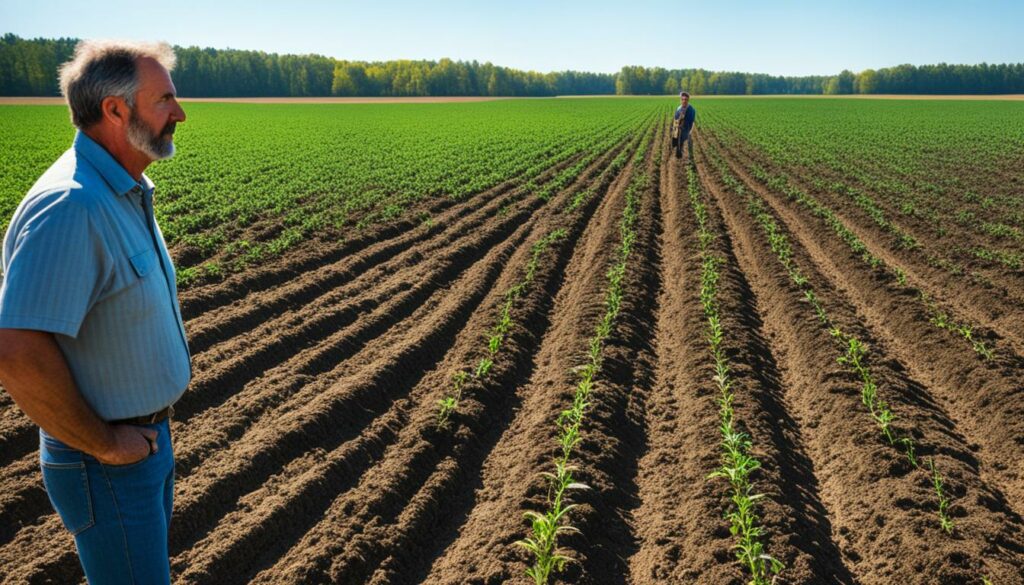
Managing leftover crop bits can be hard in organic no-till farming. This material can lead to problems with pests and diseases. Yet, using modern tools allows planting right over these remains.
This lets the leftovers enrich the soil, saving money and helping the earth at the same time.
Having good *pest and disease control* is a must in organic no-till farming. Since tilling does not break the pest and disease cycle, they can stay around. To fight this, a mix of approaches is needed. This includes watching closely and using natural methods.
And, tools like EOSDA Crop Monitoring can give farmers key info. This helps them manage their fields smarter.
While starting up in this field can be costly, the rewards are great in the long run. Zero-till farming saves energy, looks after soil health, and helps plant and animal life thrive. These methods are vital for a healthy planet and fighting climate change. Still, keeping an eye on the use of herbicides is also very important.
Adding crop rotation to organic no-till systems is key for better soil health and eco-friendly farming. It involves planting different crops regularly on the same land. This breaks the cycle of pests and diseases, reducing the need for harmful chemicals.
Crop rotation also boosts the soil’s nutrients. Various crops have different needs and can help each other grow better. For example, soybeans can add nitrogen to the soil. This cuts down on the use of artificial fertilizers, which is great for the environment.
This method can significantly raise the amount of carbon in the soil. This makes the soil more fertile. By changing the crops each year, farmers can improve the land they work on.
This method also helps the soil’s physical quality. Using crops like corn and soybeans in a four-year cycle can positively change the soil. It also helps manage old crop materials, reducing disease risks.
The U.S. Department of Agriculture points out that no-till saves fuel. It’s cost-effective for farmers. Plus, support programmes make it easier for farmers to choose this method. In the end, using crop rotation with no-till can benefit the farm and the environment.
We’re looking at Macauley Farms in New York for our study on organic no-till farming. Here, the Macauley family found success in both money matters and helping our planet. This came from using no-till and cover crops.
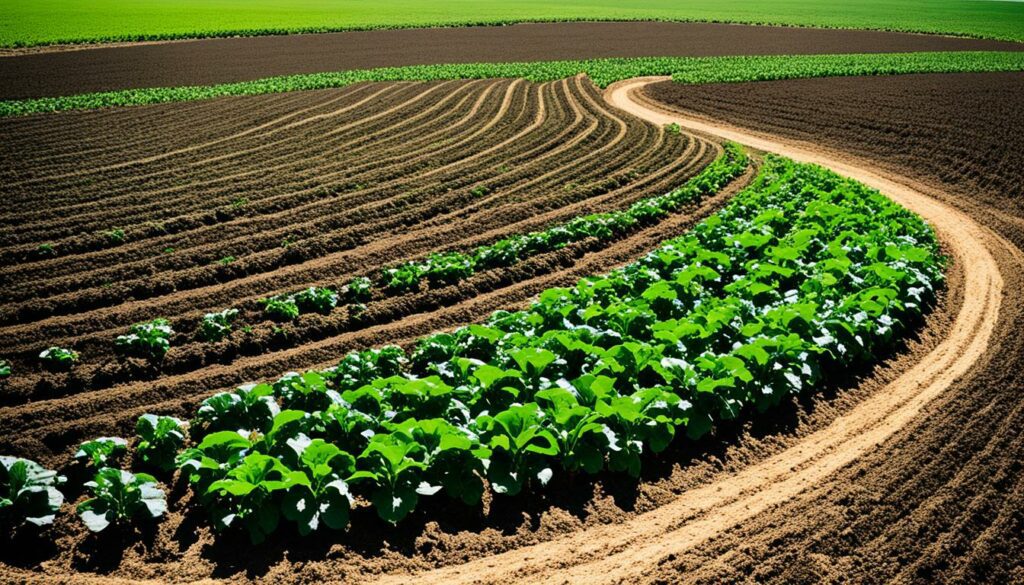
In 2017, Macauley Farms changed from dairy to beef farming. With 80 cattle, they also changed how they farmed. They now manage 1,106 acres, using no-till methods on 567 of these. They’re part of a group promoting new ways to protect land, too.
They got help in 2012 through an EQIP project to use no-till on all their cropland. They started planting a variety of cover crops, like oats, and hairy vetch. Planting cash crops in these covers, which is called “planting green,” helps the soil and controls weeds.
One big plus they found from this is more money each year. The change to organic no-till added $11 more per acre yearly, around $4,780 more each year on their 450 acres. This is an 18% increase, showing that organic no-till can be a wise choice for farms, both financially and for the environment.
The farm’s green impact is also impressive. Using no-till and specific crops on a 10-acre plot cut greenhouse gases by a lot. It’s like taking a car off the road each year. This shows how organic no-till cuts down on climate harm.
MacAuley Farms uses a detailed approach for their operations. Here is some important info:
| Aspect | Details |
|---|---|
| Type of Operation | Beef (80 cattle) |
| Total Acres | 1,106 acres |
| River Bottom Acres | 200 acres |
| Hay and Pasture Acres | 339 acres |
| Rolling Hills Acres | 567 acres |
| No-Till Cropland | 567 acres |
| Rotational Crops | Grain Corn, Soybeans, Wheat |
| Cover Crops | 12-way mix before corn, 7-way mix before soybeans |
| Nitrogen Application | Mid-season split on 254 acres of corn and wheat |
This special case study from Macauley Farms proves that organic no-till farming works. It brings more money and helps the Earth. By using these methods, farms can do well in today’s farm world.
Organic no-till farming is key for sustainable agriculture. It brings many benefits to the environment and the economy. This method improves our farming system, making it more resilient and sustainable over time.
Organic no-till farming is great for the environment. It doesn’t disturb the soil much, saving soil carbon. This makes the soil store more carbon, helping lessen the effects of climate change.
This method also helps prevent soil erosion. Fields where animals graze on permanent pasture are good examples. They erode soil less. Using cover crops in no-till farming adds nutrients to the soil. It makes the land healthier overall.
Farmers can save a lot of money by using no-till farming. The U.S. Department of Agriculture says it can cut diesel use by 2 to 6 gallons per acre. This lowers costs. Fertilisers are applied more efficiently, reducing waste. This adds up to more savings over time. While it does need special equipment at first, in the long run, it boosts profits and cuts down on using fossil fuels. Many farms see better yields and profit after about 13 years.
No-till farming is great for the future of farming. It means less need for chemical herbicides. So, it’s healthier for wildlife and the world around us. A report from the Economic Research Service over 15 years shows that farming is moving towards more sustainable practices. Tools for precision agriculture help farmers do no-till farming even better. They can match their farming techniques to their land and the weather. But, note that no-till farming takes time to make the soil healthier. The benefits show up slowly over time.
In the end, organic no-till farming is critical for a better farming future. It’s great for the soil, the economy, and the environment in the long run.
Agroecology looks at farming in a big-picture way. It includes organic no-till methods, viewing farms as whole ecosystems. This approach values biodiversity, nutrient recycling, and the lively mix between plants and animals. Agroecology fuels a type of farming that is better for the planet and people. By weaving together the health of the land with that of the community, it creates a win-win.
Turning to organic no-till has a big plus – it costs less to farm. We now can plant without ploughing, thanks to advanced machines. This lets us keep the ground covered with old plant parts, which hold moisture in the soil. It means less water use, better for the planet, and helps to trap carbon. This alone is a huge boon for both the dirt and our fight against climate change.
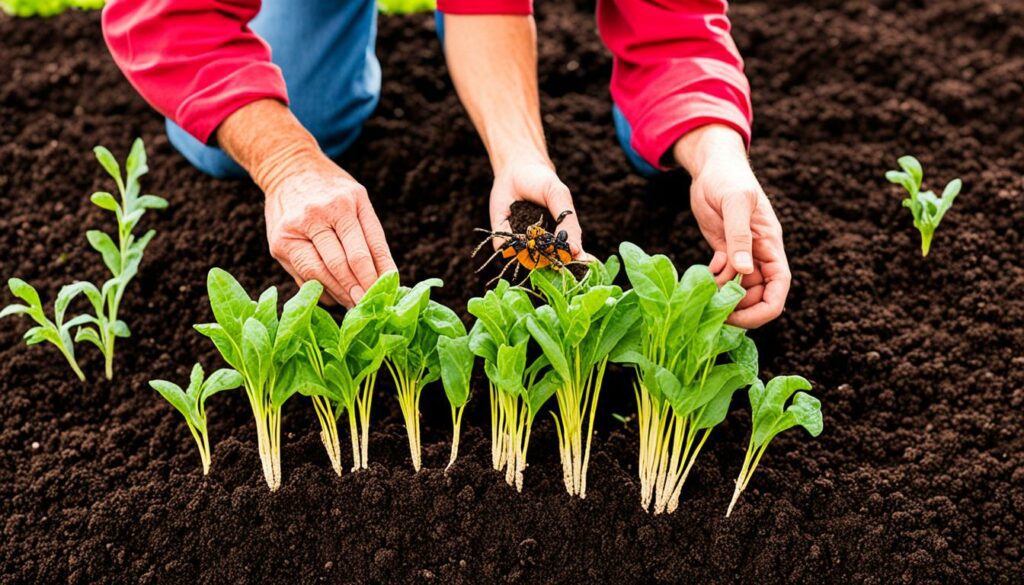
Farming this way also means using way less fuel – only a tiny 2 to 6 gallons per acre. That’s a step forward for the environment and matches what agroecology aims to do. Thanks to government support and good economics, more farmers are moving towards no-till. They’re finding an ally in tools like EOSDA too, which keep an eye on crops and advice on what the plant babies need to thrive.
Yet, there are hurdles to jump. It takes money to get the right farm tools, and dealing with pests and weeds is tough without chemicals. Also, diseases can spread through old plant bits left behind, calling for smart planting and managing what’s left after harvesting. But, keeping and sowing special plants can really help the soil stay well, making the whole farming thing stick around longer and healthier.
| Benefit | Description |
|---|---|
| Cost Reduction | Modern machines allow sowing on residue-covered strips, reducing plowing expenses. |
| Environmental Impact | Limits diesel fuel use to 2 to 6 gallons per acre, significantly lowering fossil fuel consumption. |
| Water Management | Conserves soil moisture, reducing water spending through slowed evaporation and low cracking. |
| Carbon Sequestration | Maintains and builds soil organic carbon levels, helping in climate change mitigation. |
| Adoption and Support | USDA conservation programs encourage no-till adoption, supported by economic and environmental benefits. |
The US government backs farmers who go the organic no-till route. The Conservation Stewardship Programme (CSP) and Environmental Quality Incentives Programme (EQIP) provide big support. They give both money and guidance. This helps farmers use good land-saving ways.
In the Conservation Stewardship Programme (CSP), farmers get paid to look after their land. Each year, they get $7.50 for every acre they use. They also get an extra $350 for each land issue they tackle.
Farmers can earn more for using crops that protect the soil. This helps keep the ground healthy and builds sustainability. Every area may focus on different land issues. This makes sure the help fits the local problems well.
The Environmental Quality Incentives Programme (EQIP) aims to help farmers care for the environment and make their farms last. Its support for each farmer is limited to $450,000 in total from 2014 to 2018. Farmers must meet the $900,000 yearly income limit to join.
This programme pushes for eco-savvy farming like no-till. It shows that such eco-friendly ways can save money and increase farm incomes. By healing the soil and cutting down on soil loss, it also boosts farm work results.
| Programme | Key Benefits |
|---|---|
| Conservation Stewardship Programme (CSP) |
|
| Environmental Quality Incentives Programme (EQIP) |
|
These federal plans help farmers choose and do no-till farming the right way. This improves the land for the long haul and keeps farms productive.
Going with organic no-till methods can really change the game in farming sustainably. You need to know a bunch of practical tips to make these methods work well. This includes stuff like when to end cover crops and how to set up your planting gear. These steps are key to making your no-till farming a hit.
One top tip is getting the timing right for ending cover crops. You want to end them at a time that helps the next plants grow well. You should aim to leave some cover behind to protect the soil but not too much that it blocks the new plants.
It’s also vital to tweak your planting gear for different field types. Machines made for no-till farming can seed straight into the leftover cover. This cuts fuel use and takes advantage of nutrients in the ground. The U.S. Department of Agriculture says, using no-till can save 2 to 6 gallons of diesel per acre, which is quite a lot.
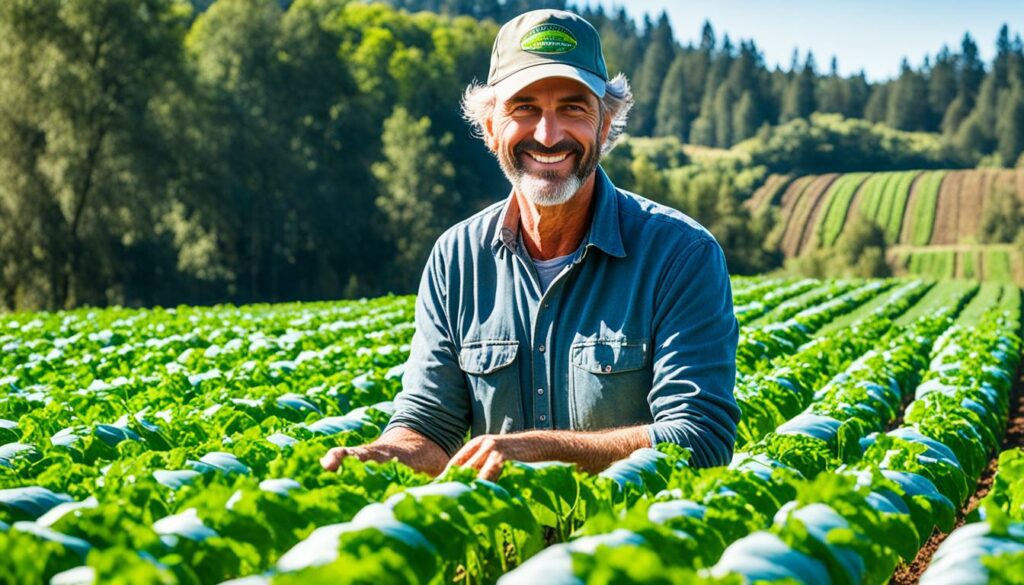
Using pop-up fertilisers is another key tip for having crops grow evenly. These give new plants the nutrients they need to start strong. It’s also crucial to stay on top of pests since they can hide in old crops. A good plan for pest management means checking often and acting fast to stop big bug problems.
Also, using helpful tech like EOSDA Crop Monitoring can really make a difference. These tools let you check on crop health, the best areas to grow, and what the weather might do. They can make no-till farming work even better, helping you make smarter choices and use your resources well.
| Benefits | Statistics |
|---|---|
| Fuel Efficiency | 2 to 6 gallons of diesel per acre |
| Soil Moisture Conservation | Reduced evaporation and cracking |
| Carbon Sequestration | Enhanced soil organic carbon |
Though it might cost a bit to get the right machines and gear, the benefits in the long run are huge. You get better soil and you don’t spend as much on fuel. With these practical farming tips, some modern tech, and keeping up with what works, you can do really well with no-till farming.
Organic no-till farming is a key method in regenerative farming. It puts soil health and long-term sustainability first. It cuts down soil erosion by using tools like the roller crimper. This keeps the soil healthy by holding the organic matter in place.
Using roller crimpers helps the soil and lowers costs for farmers. It does multiple jobs at once, like stopping cover crops and planting new ones. This saves time and money for the farmers.
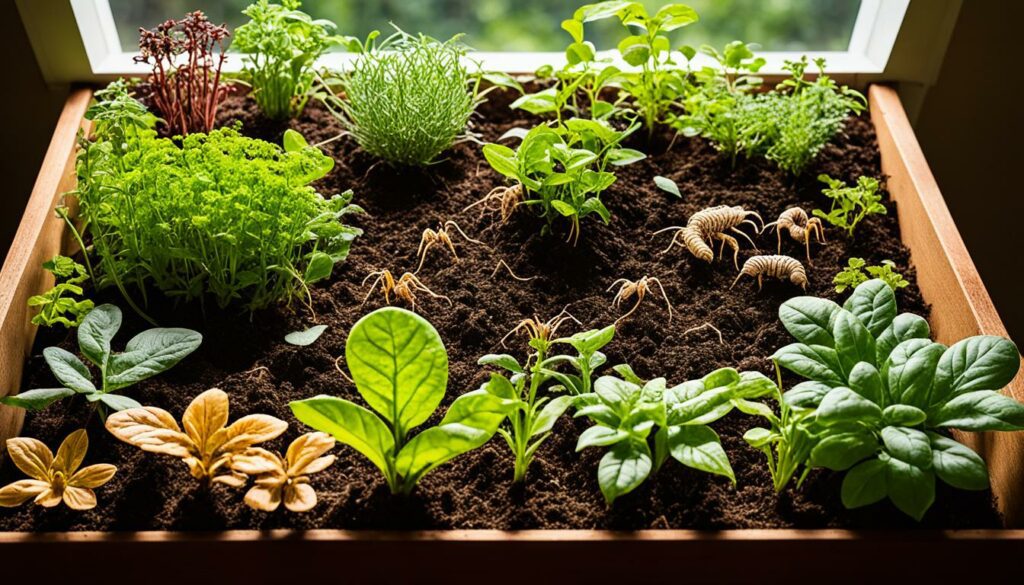
This farming also boosts biodiversity and lowers weed growth. It makes the farm’s ecosystem healthier and more balanced.
The key to success is picking the right cover crops. Winter rye, barley, and millet work best. Stopping these crops at the right time using the roller crimper is crucial.
In early tests, the yield from this method was as good as farms using cover crops.
Some crops, like tomatoes and certain brassicas, do very well without tilling. Winter cover crops, such as rye and vetch, help the soil a lot. They add over three tons of dry matter per acre above the ground.
Despite its benefits, some farms need light tilling to control weeds. Buying special tools for no-till farming, like transplanters, can be expensive. They cost at least $7000 per row, but they help with the work.
New methods in organic no-till farming now use many different cover crops. Oats, peas, soybeans, and more are part of a varied planting to manage without tilling. How these crops are handled after planting, like mowing or rolling, affects the ground and the weed control.
The aim of these regenerative farming ways is clear: to have sustainable ways of farming that use fewer chemicals. These methods aim to make the soil healthier and stronger.
The future of farming is about using methods that help the environment. Organic no-till farming is one of these key methods. It’s becoming popular worldwide because it brings more benefits than traditional farming.
This approach focuses on not disturbing the soil much. It keeps the soil covered and uses plants smartly. This helps the soil and environment stay healthy. No-till farming also helps fight climate change by trapping more carbon.
This way of farming needs time to show its full effects, up to six years. Yet, the wait is worth it. It saves money and water, and makes the land stronger. By choosing this path, we’re making the earth better for those who come after us.
Organic no-till farming means planting crops without tilling the soil. It protects the ground and uses less machinery. This method helps keep soil healthy and stops it from washing away.
No-till farming keeps the soil healthy by saving the good parts of the soil. This means water soaks in better, and the soil keeps more moisture. It also helps plants grow strong by giving them important nutrients.
Cover crops are important in no-till systems. They stop the soil from washing away, make it richer, and help it hold more water. Cover crops also keep the bad plants away and give good bugs a place to live.
Cover crops block the light and nutrients that bad plants need. This can stop farmers from using chemicals to kill weeds. They need to stop the cover crops at the right time and use special natural weed killers.
Carbon sequestration is about keeping carbon dioxide out of the air. Organic no-till farming helps by disturbing the soil less. This keeps carbon in the ground, where it helps the environment.
It can be hard to manage the leftover parts of plants in this type of farming. This problem can make the soil cool and damp, and attract bad bugs. But, if farmers work hard to clean up the fields and control the bugs, they can still grow good crops.
Changing the crops from year to year helps the soil and stops bad bugs from coming back. It works well with no-till farming and makes sure the land stays good for growing crops.
Macauley Farms in Livingston, New York, has done well with organic no-till farming. It made more money, stopped soil from washing away, and cut down on greenhouse gases. This shows how good farming can be for the planet and a farmer’s wallet.
This way of farming is good for the earth over time. It makes the soil stronger, needs less fuel, and keeps going without costing a lot. It helps farming stay healthy and work well for a long time.
Agroecology looks at farms like whole ecosystems, including no-till methods. It cares about using nature’s processes to keep everything in balance. This way, farming is good for the earth and keeps producing food.
Help comes from programmes like CSP and EQIP. They give advice and money to farmers who farm without tilling. These programmes look after the soil, water, and air.
Farmers can get better at no-till by stopping cover crops at the right time, choosing the best farm tools, and using the right fertiliser. It also means keeping insects and other pests under control. Farm help groups can offer more ideas to improve no-till farming.
No-till farming is a key part of farming that cares for the planet. It keeps the soil in good shape, costs less to run, and helps fight climate change. It makes a place for healthy crops and a green earth for everyone.